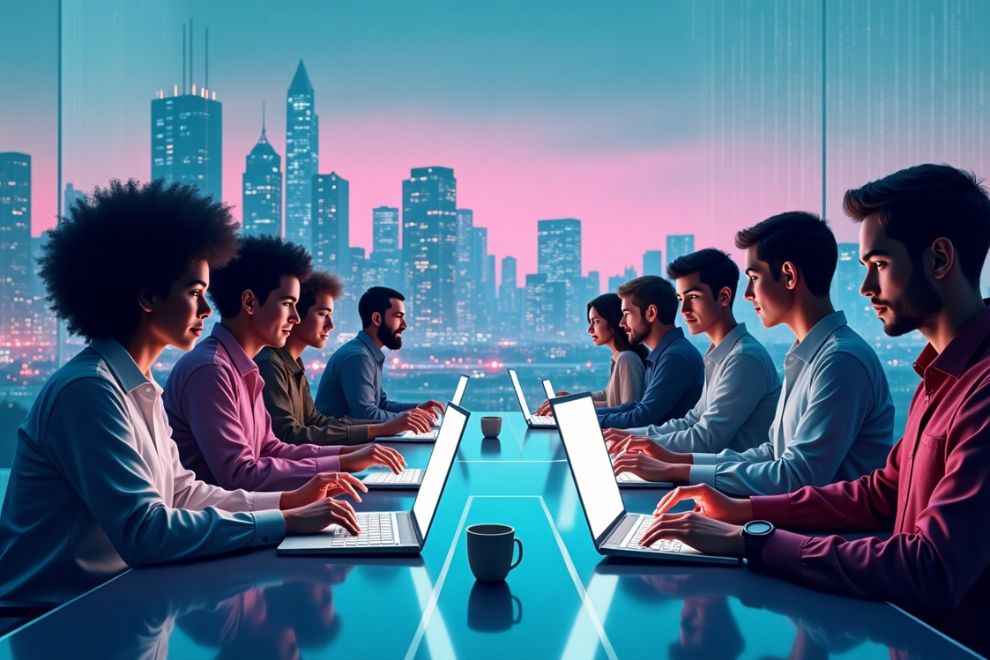In the ever-evolving landscape of work, 2025 has ushered in a new era defined by digital labor. Gone are the days when labor was solely associated with physical toil or traditional office environments. Today, labor has transformed into a digitized, flexible, and global phenomenon that reshapes how individuals and companies interact, produce, and thrive.
Understanding Digital Labor
Digital labor refers to the use of digital platforms, tools, and technologies to perform work. This includes everything from freelance coding, content creation, and virtual assistance to data labeling, social media management, and artificial intelligence (AI) training tasks. The internet has enabled labor to transcend geographical barriers, allowing workers from various parts of the world to contribute to a global digital economy.
In 2025, digital labor is not just a trend—it is the new normal. Companies increasingly rely on remote professionals and cloud-based collaboration tools to accomplish critical business functions. This digital shift has redefined the concept of labor, emphasizing output, creativity, and connectivity over physical presence.
The Rise of the Digital Workforce
The COVID-19 pandemic laid the groundwork for remote work, but what followed was a full-blown revolution. By 2025, nearly 40% of the global workforce is engaged in some form of digital labor. This includes full-time remote employees, freelancers, gig workers, and digital entrepreneurs.
Platforms like Upwork, Fiverr, Toptal, and Freelancer.com have become marketplaces for digital labor, offering opportunities in areas such as graphic design, marketing, software development, and customer support. Social media has also emerged as a hub for labor, where influencers and creators monetize content through brand collaborations and affiliate marketing.
The rise of artificial intelligence has further expanded the digital labor market. From annotating data for machine learning models to moderating online content, AI has created new forms of labor that didn’t exist a decade ago.
Key Characteristics of Digital Labor in 2025
- Flexibility: Digital labor offers unmatched flexibility. Workers can choose when, where, and how they work, often juggling multiple clients or gigs at the same time.
- Globalization: The digital labor market is truly global. A graphic designer in Nigeria, a coder in Ukraine, and a virtual assistant in the Philippines can all collaborate with clients in the U.S. or Europe seamlessly.
- Skill-Based Economy: In the digital age, skills define labor, not degrees. Employers and clients prioritize hands-on capabilities, portfolios, and real-world experience over formal qualifications.
- Automation Integration: Many digital labor tasks are now aided by automation tools. Workers are expected to integrate AI and machine learning into their workflows, enhancing productivity and efficiency.
- Decentralized Workspaces: With the advent of blockchain and decentralized networks, some digital labor markets are operating on peer-to-peer systems, reducing the need for centralized intermediaries.
Pros and Cons of Digital Labor
Advantages
- Economic Empowerment: Digital labor allows individuals from developing regions to access high-paying global jobs.
- Work-Life Balance: Flexibility helps many workers achieve better work-life integration.
- Diverse Opportunities: A wide variety of labor options cater to different interests and skills.
- Scalability for Businesses: Companies can scale quickly by outsourcing digital tasks without long-term commitments.
Challenges
- Job Insecurity: Many digital labor roles are project-based, leading to income instability.
- Lack of Benefits: Freelancers often miss out on traditional employee benefits like health insurance and paid leave.
- Exploitation Risk: The gig economy can sometimes lead to underpayment or overwork, especially when regulation is weak.
- Digital Divide: Not everyone has equal access to the internet or digital tools, which can limit participation in digital labor.

The Role of Governments and Institutions
As digital labor becomes mainstream, policymakers and institutions are under pressure to redefine labor laws and protections. There’s a growing need to recognize gig workers and freelancers under labor rights frameworks. Issues like minimum wage, taxation, and benefits must be addressed in the context of remote and freelance work.
Several countries have already started taking steps. In 2025, nations like Canada, Germany, and India have introduced digital labor guidelines ensuring platform accountability, fair pay, and dispute resolution mechanisms for online workers.
Educational institutions are also evolving. Universities and training centers are increasingly offering micro-credentials, boot camps, and online courses tailored to digital labor skills like coding, UI/UX design, SEO, and content writing.
The Human Side of Digital Labor
Behind every digital service lies human labor. It’s easy to assume that digital means impersonal, but the truth is, digital labor is deeply human. It’s about creativity, critical thinking, and collaboration. Despite the involvement of machines and algorithms, people remain at the heart of digital productivity.
However, the mental health of digital laborers is a growing concern. Working in isolation, juggling irregular hours, and dealing with algorithmic evaluations can lead to stress and burnout. Hence, digital well-being initiatives are gaining traction, encouraging workers to balance screen time, engage in peer communities, and access mental health resources.
The Future of Labor: Hybrid Models and AI Synergy
Looking ahead, the future of labor in 2025 and beyond points toward hybrid models. Many organizations are adopting a mix of in-house teams and digital labor networks. AI will play a supportive role, handling repetitive tasks while humans focus on strategy and innovation.
Human-AI collaboration will redefine labor dynamics. For instance, a writer may use AI tools to generate drafts, a designer may leverage AI for rapid prototyping, and a data analyst may employ machine learning to interpret large datasets. Far from replacing labor, AI enhances it—when used ethically and creatively.
The world of labor in 2025 is no longer confined to factories or offices. It exists in cloud servers, video calls, freelance platforms, and digital dashboards. Digital labor is the new face of work, characterized by its flexibility, inclusivity, and innovation.
While the transition brings challenges, it also offers immense potential for empowerment and growth. As we adapt to this new landscape, the focus should remain on making digital labor more sustainable, ethical, and equitable for all.
In this exciting new world, labor is not vanishing—it’s evolving. And for those who can harness its power, the opportunities are limitless.


